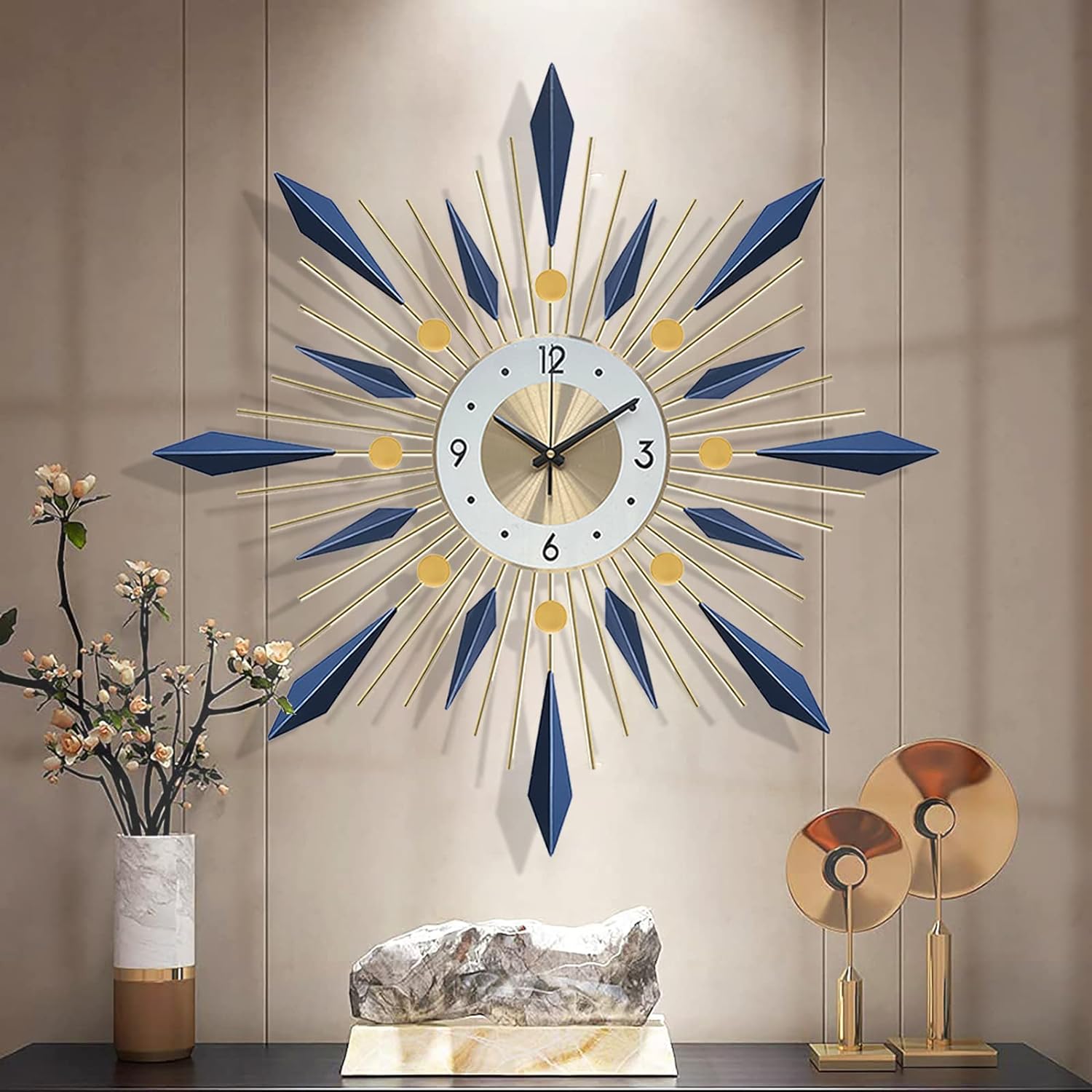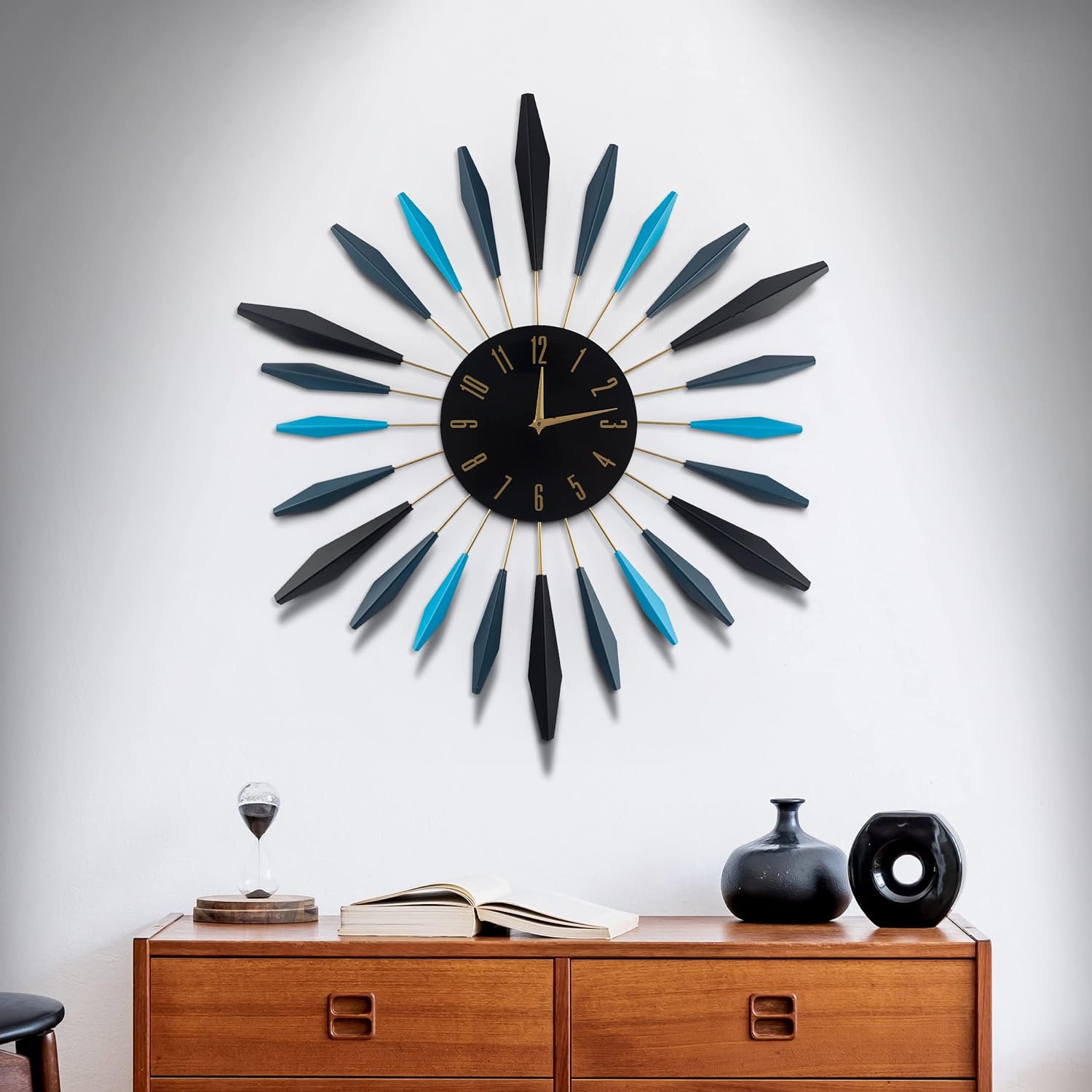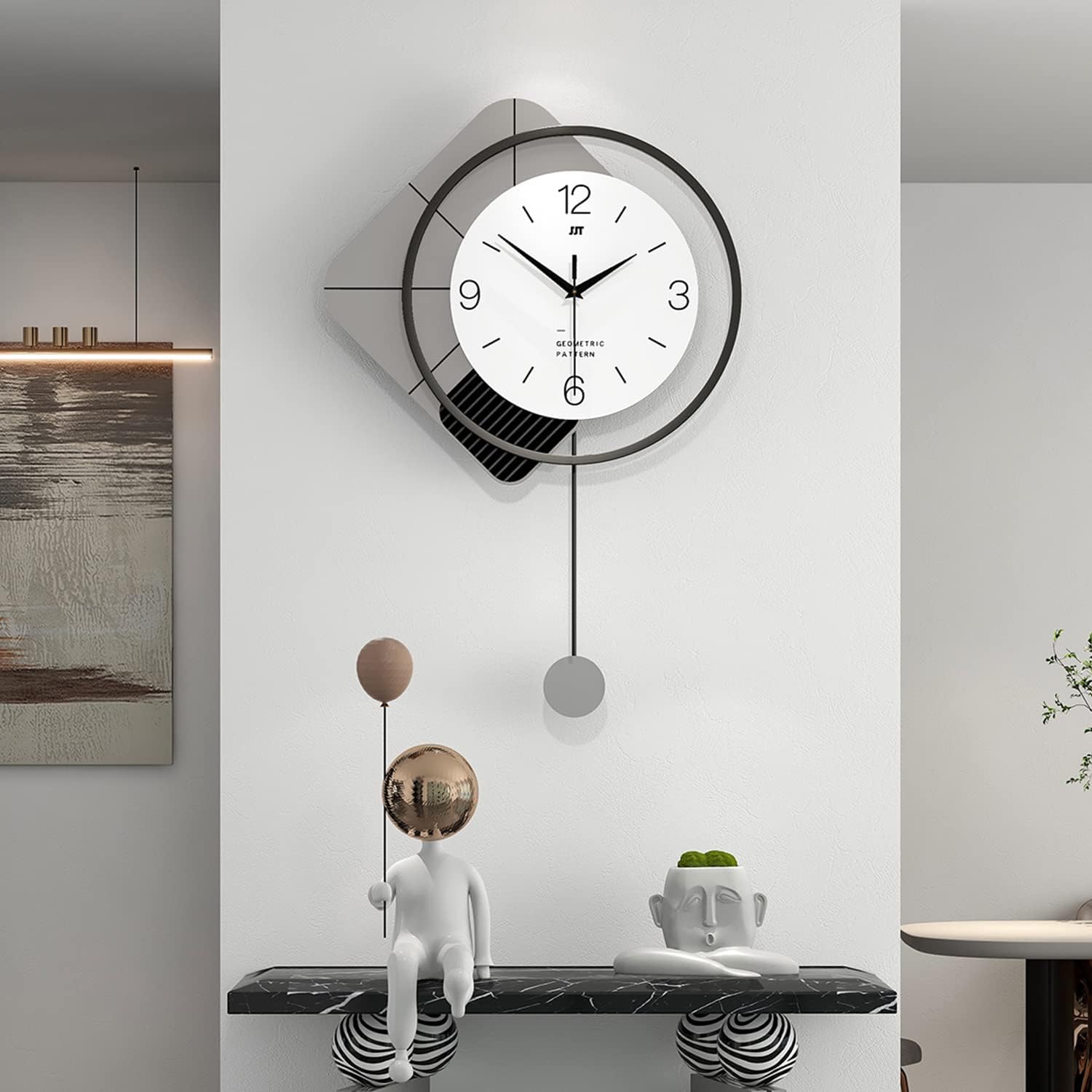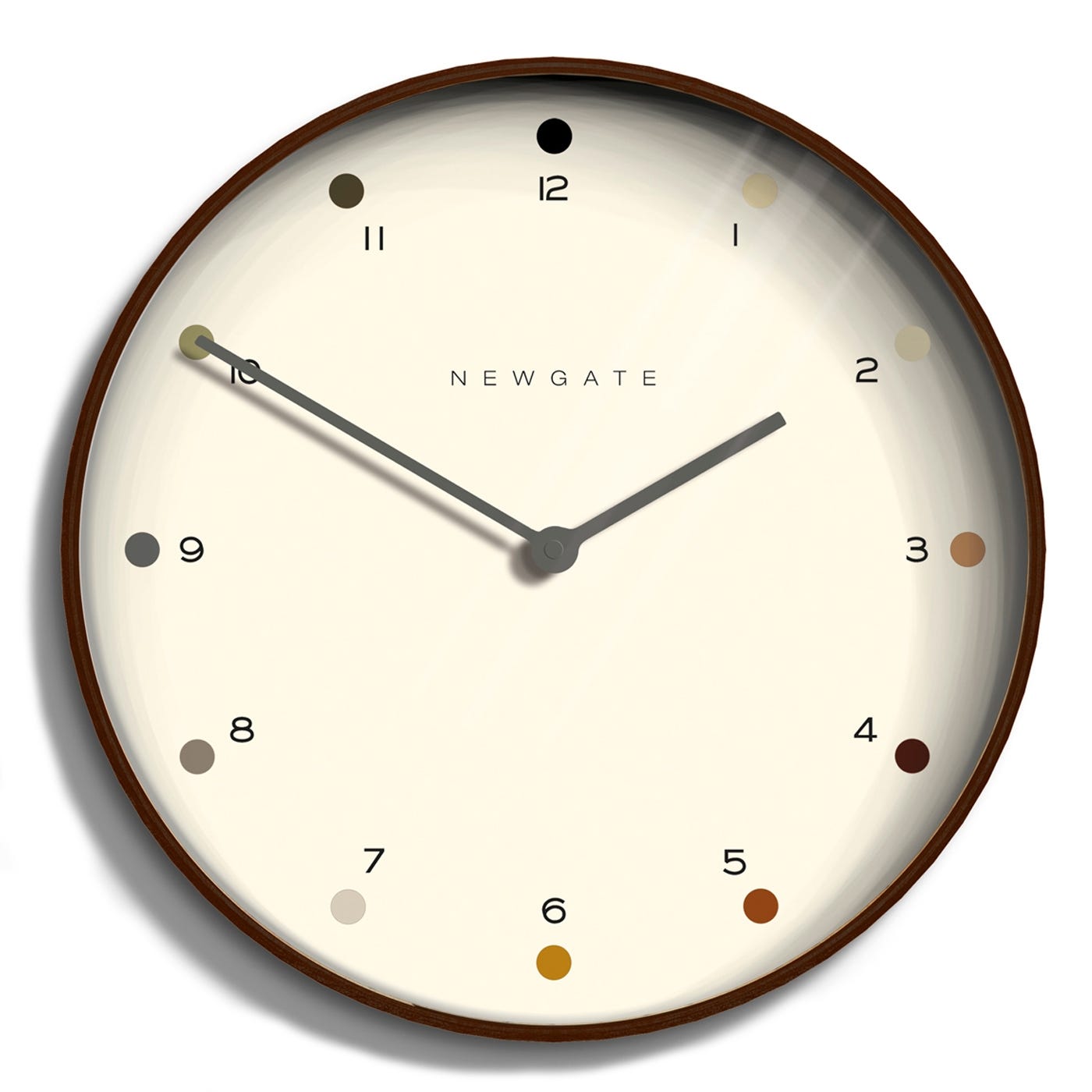Introduction: Timeless Elegance Meets Contemporary Design
In an era where technology has made time-telling ubiquitous, wall clocks have transcended their primary function to become statement pieces of home décor. Far from being relics of the past, modern wall clock(Spanish: reloj de pared moderno) designs now blend artistry, functionality, and a touch of personal style to enhance any living space. This comprehensive guide delves into the world of contemporary clock designs, exploring how they can elevate your home’s aesthetic appeal while serving as a subtle reminder of life’s most precious commodity – time.

Revolutionizing Traditional Forms: Geometric and Abstract Shapes
Gone are the days when clocks adhered strictly to circular or rectangular frames. Today’s designs play with geometry, offering triangles, hexagons, and even asymmetric shapes that challenge conventional norms. These abstract forms not only serve as visual focal points but also add depth and dimension to walls, especially when paired with minimalist interiors. The strategic use of negative space in these designs creates an illusion of movement, making the clock a dynamic element in the room rather than a static one.
Materials Matter: Wood, Metal, and Beyond
One of the defining features of modern wall clocks is the creative use of materials. Natural wood grains bring warmth and a rustic charm, while sleek metals like stainless steel or brushed aluminum offer a more industrial, sophisticated look. Eco-conscious homeowners can opt for clocks crafted from recycled materials, adding a unique narrative to their living spaces. Glass and acrylics provide transparency, allowing the wall color to interact with the clock design, creating a harmonious integration. Moreover, the fusion of different materials, such as wood and metal, adds texture and depth, reflecting a thoughtful design approach.

Color and Texture: Adding Personality to Your Walls
Contemporary wall clocks often utilize vibrant colors and textures to make bold statements. From monochromatic palettes that complement minimalist decors to pops of neon or pastels that infuse, color choices significantly impact the mood of a room. Textured faces or hands, such as those mimicking stone or fabric, introduce tactile interest, enhancing sensory experience beyond visual appeal. These elements can be strategically selected to either contrast or blend with existing décor, allowing the clock to either stand out or subtly integrate into its surroundings.
Function Meets Form: Smart and Multi-Functional Clocks
Advancements in technology have enabled clocks to incorporate smart features without compromising aesthetics. Some models double as sound systems, temperature displays, or even air quality monitors, transforming them into functional hubs within the home. Voice-controlled clocks that sync with smart home systems further streamline daily routines. Despite their added functionalities, designers ensure these multi-taskers maintain a sleek profile, ensuring they remain stylish elements rather than tech intrusions.

Artistic Expressions: Clocks as Wall Art
Emphasizing the artistic potential of timepieces, many modern clocks are designed akin to wall art. These may feature intricate hand-painted motifs, abstract prints, or even incorporate digital art displays that change periodically. Such clocks often become conversation starters, reflecting the owner’s taste and personality. In open-plan living spaces, oversized clocks with elaborate designs can define zones, acting as partitions while contributing to the overall aesthetic harmony.
Personalized Pieces: Customization and DIY Trends
Recognizing the desire for personalized home décor, custom-made and DIY wall clock options have surged in popularity. Platforms offer tailor-made clocks where customers can choose everything from size and shape to materials and finishes, ensuring a perfect match for their interior design schemes. Alternatively, DIY enthusiasts can repurpose vintage finds or create clocks using unconventional materials, injecting a sense of individuality and creativity into their homes.

Innovative Movements: Non-Traditional Mechanisms and Displays
Modern wall clocks are also pushing boundaries with their display technologies and mechanisms. Instead of traditional clock hands, some designs utilize digital displays that can be customized for brightness and color, adapting seamlessly to different lighting conditions. Others employ unique mechanical movements, such as rotating disks or balls moving along tracks, which not only tell time but also serve as mesmerizing kinetic sculptures.
Sustainability and Energy Efficiency
As environmental concerns rise, eco-friendly features are being incorporated into clock designs. Solar-powered clocks harness natural light to operate, reducing energy consumption. Additionally, clocks with energy-efficient LED backlighting ensure minimal power usage without compromising visibility. These green innovations align with the growing trend of responsible consumerism, allowing homeowners to make a style statement while contributing to sustainability efforts.
Interactive and Mood-Altering Features
Taking personalization a step further, some contemporary clocks feature interactive technologies. Mood clocks, for instance, change color or lighting intensity based on the time of day or ambient noise levels, creating an ambiance that complements the user’s activities or emotions. Others may include ambient lighting modes that can be controlled via smartphone apps, transforming the clock into a versatile lighting accessory.

Fusing History with Modernity: Retro-Inspired Designs
While embracing innovation, modern wall clocks also pay homage to the past. Retro designs, inspired by mid-century modern or Art Deco styles, are given a contemporary twist with updated materials and color schemes. These clocks often feature clean lines, geometric patterns, and a touch of nostalgia, blending seamlessly into both vintage-inspired and modern settings.
Accessibility and Universal Design
Designers are increasingly considering accessibility in their creations, ensuring that modern wall clocks cater to diverse needs. This includes larger numerals and high-contrast displays for improved readability, as well as tactile markers for individuals with visual impairments. Furthermore, voice-activated features not only enhance functionality but also support inclusivity by catering to users with different abilities.
Conclusion: Timepieces as Timeless Decorative Elements
In conclusion, modern wall clock designs have transcended their traditional roles, becoming versatile decorative pieces that reflect personal style and enhance home aesthetics. Whether through avant-garde shapes, innovative materials, artistic expressions, or smart functionalities, these clocks are integral to contemporary interior design. By thoughtfully selecting a wall clock that complements your space, you’re not just telling time; you’re making a statement about your appreciation for design, craftsmanship, and the beauty of moments shared within your sanctuary.
Modern wall clocks have evolved into multifaceted elements that transcend their primary function of timekeeping. They are now artistic expressions, technological integrations, sustainable solutions, and personalized statements that enrich our living spaces. As design continues to progress, the future of wall clocks promises even more exciting intersections of form, function, and technology, further redefining how we perceive and interact with time in our daily lives.








